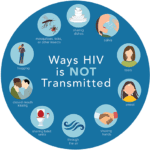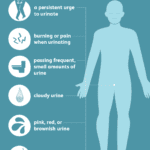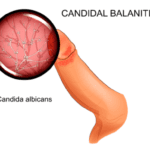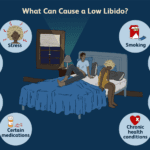Breaking Down the Types of STDs
Sexually transmitted diseases (STDs) pose a significant health risk to millions of people worldwide. These infections are caused by bacteria, viruses, or parasites that are passed from one person to another through sexual contact. In some cases, STDs can lead to serious health consequences if left untreated.
In this article, we will explore the different types of STDs, including their causes, symptoms, and treatment options. We will focus on the most common types of STDs such as Chlamydia and Gonorrhea as well as the most serious ones like HIV/AIDS. Additionally, we will discuss at-home testing kits that help individuals identify if they have contracted an STD and how early detection can prevent long-term damage.
If you are concerned about your sexual health and want to learn more about STDs and how to protect yourself from them, then this article is for you. Our goal is to provide accurate information that empowers you to make informed decisions about your sexual health while also promoting a hopeful outlook for those who may be struggling with an STD diagnosis.
Understanding STDs
Sexually transmitted diseases (STDs) are a group of infections that spread through sexual contact. They can be caused by bacteria, viruses, or parasites and can affect anyone regardless of age or gender. Although STDs are common, they can have serious health consequences if left untreated.
Some STDs can be cured with antibiotics or antiviral medications, while others last a lifetime. Certain types of STDs may not show symptoms immediately and can remain dormant in the body for years before causing noticeable health problems. Using condoms during sexual activity is the most effective way to prevent transmission of STDs.
It is important to get tested regularly for STDs, especially if you are sexually active with multiple partners or engage in unprotected sex. Many people with an STD do not know they have it because they do not experience any symptoms. Getting tested is the only way to know for sure if you have an STD.
 Types of STDs
Types of STDs
Sexually transmitted diseases (STDs), also known as sexually transmitted infections (STIs), are caused by bacteria, viruses, and parasites that are spread through sexual contact. There are many types of STDs, some of which are curable while others can only be managed with treatment. Here’s a breakdown of the most common types:
Chlamydia
Chlamydia is a bacterial infection that affects both men and women. It’s the most commonly reported bacterial STD in the US and can be transmitted through vaginal, anal, or oral sex with an infected person. Symptoms may go unnoticed, but can include abnormal discharge from the genitals or pain when urinating. If left untreated, chlamydia can lead to serious health problems such as pelvic inflammatory disease.
The good news is that chlamydia is easily cured with antibiotics. Regular testing for sexually active individuals is recommended to catch and treat this infection early.
Gonorrhea
Gonorrhea is another bacterial infection that can affect both sexes and is easily spread through sexual contact with an infected person. Symptoms may not appear right away but include painful urination and abnormal genital discharge. If left untreated, gonorrhea can cause infertility in both men and women.
This type of STD is also curable with antibiotics but requires prompt medical attention to avoid complications.
HIV/AIDS
HIV (human immunodeficiency virus) weakens the immune system by attacking important cells that fight off infection and disease. AIDS (acquired immunodeficiency syndrome) is a late stage of HIV where the immune system has been severely damaged. HIV/AIDS is primarily spread through unprotected sex or sharing needles with an infected person.
While there is no cure for HIV/AIDS, antiretroviral therapy (ART) can help manage the virus and allow people to live long, healthy lives. Prevention through safe sex practices and regular testing is crucial to stop the spread of this serious STD.
Syphilis
Syphilis is a rare but dangerous bacterial infection that can cause serious health problems if left untreated. It’s transmitted through direct contact with a syphilis sore during vaginal, anal, or oral sex. Symptoms may not appear for years but can include sores on the genitals or mouth, rashes on the body, fever, and fatigue.
Like chlamydia and gonorrhea, syphilis can be treated with antibiotics if caught early enough. Regular testing is key for early detection and treatment.
Conclusion
Understanding the types of STDs that are out there is important for anyone who is sexually active. While some STDs are easily treatable with antibiotics, others require lifelong management to prevent complications from occurring. Practicing safe sex practices such as condom usage and regular testing for sexually active individuals are crucial in stopping the spread of these infections.
Focus on Chlamydia
Chlamydia is one of the most common sexually transmitted diseases (STDs) in the world. It is caused by bacteria known as Chlamydia trachomatis, and it affects both men and women. In this section, we will explore chlamydia in detail, including its causes, symptoms, diagnosis, treatment, and prevention.
Causes of Chlamydia
Chlamydia is caused by a type of bacteria called Chlamydia trachomatis. This bacterium is usually found in the genital tract of infected persons and can be easily spread through unprotected sexual contact with an infected partner. The bacteria can also be passed from an infected mother to her child during childbirth.
Chlamydia infection can occur at any age but it is most common among sexually active teenagers and young adults. People who have multiple sexual partners are also at high risk for getting infected with chlamydia or other STDs.
Symptoms of Chlamydia
In many cases, people who are infected with chlamydia do not experience any symptoms at all. When symptoms do occur, they may include painful urination, discharge from the genitals (usually yellow or green), lower abdominal pain in women or testicular pain in men. Women may also experience pain during sex or bleeding between periods.
If left untreated, chlamydia can lead to serious complications such as pelvic inflammatory disease (PID) in women which can damage reproductive organs and cause infertility. Men may develop epididymitis which is inflammation of the tubes that carry sperm causing fertility problems.
Treatment and Prevention
The good news is that chlamydia can be easily treated with antibiotics if caught early. It’s important that patients complete the full course of medication prescribed by their health care provider to ensure that the infection is completely cured.
Preventing chlamydia and other STDs requires consistent and correct use of condoms during sexual activity, having a mutually monogamous relationship or abstaining from sex entirely. Routine screening for sexually active individuals is also recommended to detect and treat infections early.
In conclusion, Chlamydia is a common STD that can cause serious health complications if left untreated. Knowing the causes, symptoms, treatment options and prevention methods can help prevent its spread and protect your reproductive health.
 Gonorrhea – Another Common Type of STD
Gonorrhea – Another Common Type of STD
Gonorrhea is a bacterial infection that can be transmitted through sexual contact with an infected person. It is caused by the Neisseria gonorrhoeae bacteria, which can infect the urethra, cervix, rectum, and throat. Gonorrhea can cause serious health complications if left untreated.
Common symptoms of gonorrhea include painful urination, discharge from the penis or vagina, and pain during sex. However, some people with gonorrhea may not experience any symptoms at all. This makes it important for sexually active individuals to get tested regularly for STDs.
Treatment for gonorrhea typically involves a course of antibiotics prescribed by a healthcare provider. While this treatment is effective in most cases, there has been an increase in antibiotic-resistant strains of gonorrhea. This highlights the importance of safe sex practices and regular testing to prevent further spread of the infection.
HIV/AIDS – The Most Serious STD
Human Immunodeficiency Virus (HIV) is a sexually transmitted virus that attacks the immune system. It is the most serious of all STDs because it can lead to Acquired Immunodeficiency Syndrome (AIDS), which is a life-threatening disease. HIV attacks and destroys CD4 cells, a type of white blood cell that helps the body fight off infections and diseases. When there are not enough CD4 cells left in the body, the immune system becomes weak, and it cannot protect against infections anymore. At this point, a person with HIV is said to have AIDS.
HIV spreads through semen, vaginal fluids, blood, and breast milk. The virus can enter the body through open sores or cuts in the skin or mucous membranes during sexual contact with an infected person or by sharing needles or syringes with someone who has HIV. Symptoms of HIV may not appear for years after infection but some people experience flu-like symptoms within 2-4 weeks after infection occurs.
The good news about HIV/AIDS is that there are now medications available that can delay its progression and help people living with HIV live healthy lives for many years. Antiretroviral therapy (ART) is a combination of drugs taken daily to suppress viral replication in the body and prevent further damage to the immune system. With proper treatment and medical care, people living with HIV today can expect to have an almost normal lifespan.
Syphilis – A Rare But Dangerous STD
Syphilis is a rare but potentially dangerous sexually transmitted disease caused by the bacterium Treponema pallidum. It can affect both men and women and can be transmitted through vaginal, anal, and oral sex. Syphilis progresses in stages, with each stage having different symptoms.
Primary Stage of Syphilis
The primary stage of syphilis starts about three weeks after infection and is characterized by the appearance of a small, painless sore called a chancre at the site of infection. The chancre may be visible on the genitals, anus or mouth. It usually heals on its own after several weeks even without treatment.
However, if left untreated, syphilis will progress to the secondary stage which is more severe and symptoms may appear anywhere from a week to several months after primary infection.
Secondary Stage of Syphilis
The secondary stage is characterized by rashes that appear on various parts of the body including palms and soles. Other signs include fever, swollen lymph nodes and sore throat among others. These symptoms will eventually disappear even without treatment but that does not mean that syphilis has been cured.
If left untreated syphilis will develop into tertiary syphilis which can cause serious damage to major organs such as the brain, heart or any part of the body involved.
Treatment for Syphilis
Syphilis can be easily treated with antibiotics like penicillin if diagnosed in its early stages However, people who have been infected with syphilis for a long time may require more extensive treatment depending on how advanced it has become. It’s important to note that some people might experience mild side effects such as fever, headache and muscle aches after treatment.
It is recommended that both sex partners undergo treatment to avoid reinfection. After treatment, it is important to abstain from sexual activity until the sores have completely healed.
In conclusion, syphilis may be rare but it’s a serious STD that can cause fatal complications if not treated in time. It’s important to practice safe sex and undergo regular checkups to keep your sexual health in check.
At-home STD Testing Kits
When it comes to dealing with STDs, testing is an important part of diagnosis and treatment. In the past, the only way to get tested for STDs was by going to a clinic or a hospital. However, with the advent of at-home testing kits, individuals can now test themselves from the comfort and privacy of their homes. These kits are convenient and easy-to-use, making it possible for people that may have been hesitant or nervous about getting tested in a clinical setting.
At-home STD testing kits are available for several types of sexually transmitted diseases such as chlamydia, gonorrhea, HIV/AIDS, and syphilis. The kits often come with clear instructions on how to collect samples and ship them back to a lab for analysis. Once the results come in, individuals can either seek treatment if they test positive or feel reassured if they test negative.
One significant advantage of at-home STD testing kits is that they are discreet and help maintain privacy. Individuals who might not be comfortable sharing personal information or undergoing an examination in person can opt for these tests without any fear of judgment or embarrassment. Moreover, these tests empower people to take charge of their health and make informed decisions about their sexual health in a convenient way.
Symptoms of STDs
STDs can cause a range of symptoms, which can vary depending on the type of STD you have. It’s important to note that not all STDs have visible symptoms, and some people may never know that they are infected. In this section, we will discuss some of the most common symptoms associated with STDs.
Sexually Transmitted Infections Symptoms in Women
Women who are infected with an STD may experience a range of symptoms, including vaginal discharge, painful urination, and abnormal bleeding. Some women may also develop sores or blisters around their genitals or anus. Additionally, women who have an untreated STD may be at risk for serious health complications such as infertility and cervical cancer.
If you experience any unusual symptoms related to your reproductive system or sexual health, it’s important to seek medical attention right away. Early diagnosis and treatment can help prevent further complications and improve your overall health.
Sexually Transmitted Infections Symptoms in Men
Men who are infected with an STD may experience symptoms such as painful urination, discharge from the penis, and redness or swelling around the genital area. In some cases, men may also develop sores or blisters on their genitals or anus.
If you suspect that you have an STD based on your symptoms or if you’ve had unprotected sex with someone who has an STD, make sure to get tested right away. Many STIs can be treated effectively if detected early enough.
Symptoms Common To Most Sexually Transmitted Infections
In addition to specific symptoms related to particular types of STIs like herpes or gonorrhea , there are several general signs that are common to many sexually transmitted infections:
- Painful or swollen lymph nodes in the groin
- A sore throat or flu-like symptoms
- Fever, headache, or muscle aches
- Rash or sores on the skin
- Fatigue, weakness, or loss of appetite.
These symptoms may not always indicate an STD but if you notice any of these signs after engaging in sexual activity without protection it’s important to get tested as soon as possible. By doing so, you can help prevent further spread of the disease and protect your own health.
 Treatment for STDs
Treatment for STDs
When it comes to treating STDs, early detection is crucial. The sooner an individual seeks medical help, the better chances they have of recovering from the infection. Treatment methods vary depending on the type of STD and its severity. In most cases, antibiotics are prescribed to clear up bacterial infections like chlamydia and gonorrhea. However, viral infections like HIV/AIDS cannot be cured but can be managed with antiviral medications that control the symptoms and prevent further complications.
In addition to medication, lifestyle changes can also aid in the treatment of STDs. For instance, individuals with herpes can reduce outbreaks by avoiding triggers such as stress and excessive sun exposure. Practicing safe sex by using condoms correctly and consistently is also an effective way to prevent contracting or transmitting an STD.
It’s important to note that even after completing treatment for an STD, follow-up visits with a healthcare provider are necessary to ensure that the infection has been fully cleared up. Additionally, partners of infected individuals should also be tested and treated if necessary to prevent re-infection or further spread of the infection.
Conclusion
In conclusion, understanding the different types of STDs is critical for anyone who is sexually active. While the thought of having an STD can be daunting, it’s important to remember that many STDs can be easily treated and cured with antibiotics. By being knowledgeable about the symptoms and getting tested regularly, you can take control of your sexual health and prevent the spread of STDs to others. Although it may be an uncomfortable conversation to have with your partner or doctor, discussing your sexual history openly and honestly is crucial for maintaining both your physical and emotional well-being. Remember, taking care of yourself is always worth it in the end.








